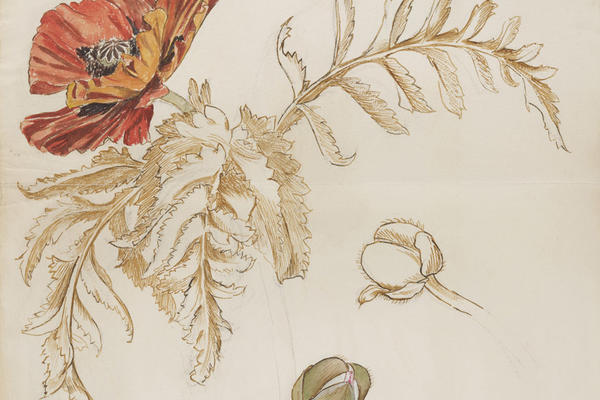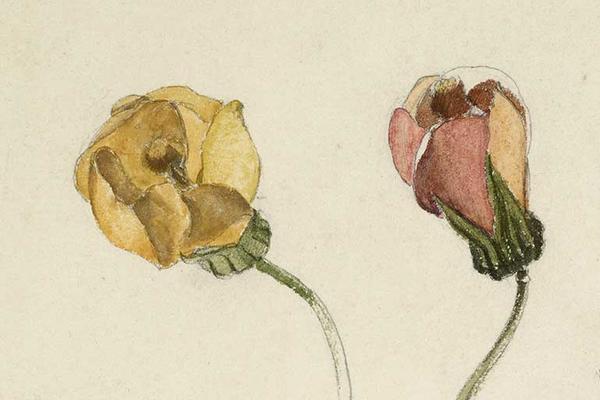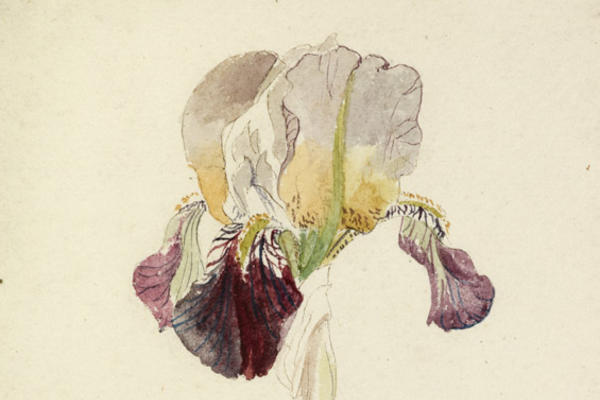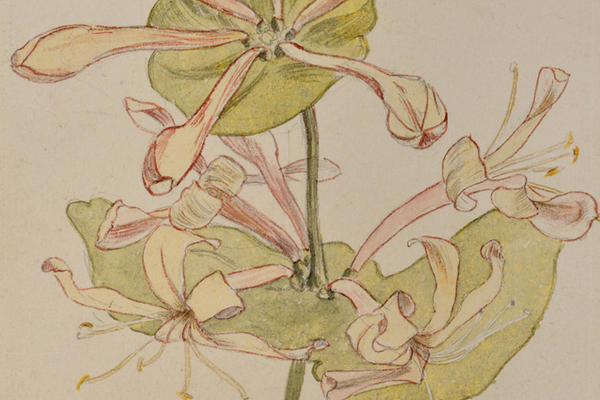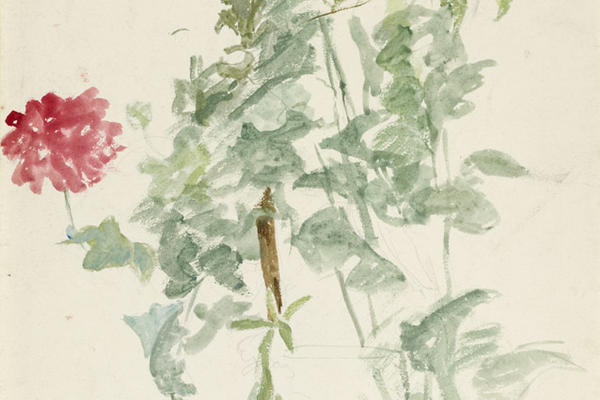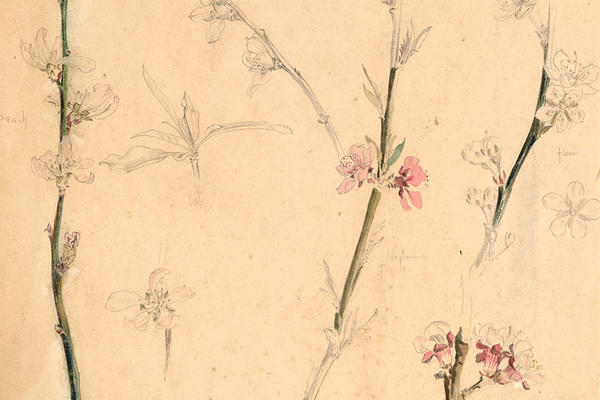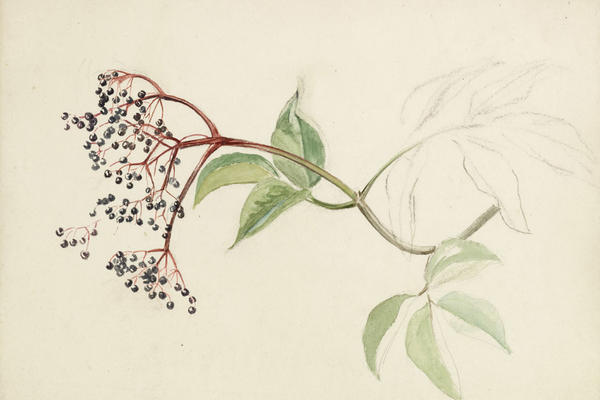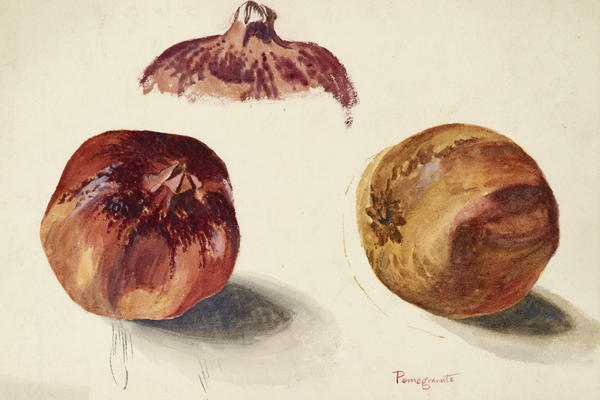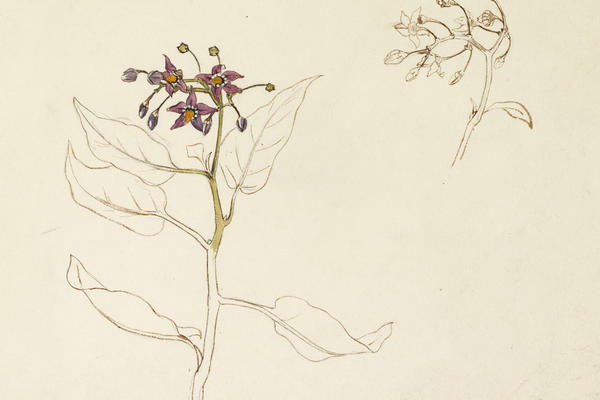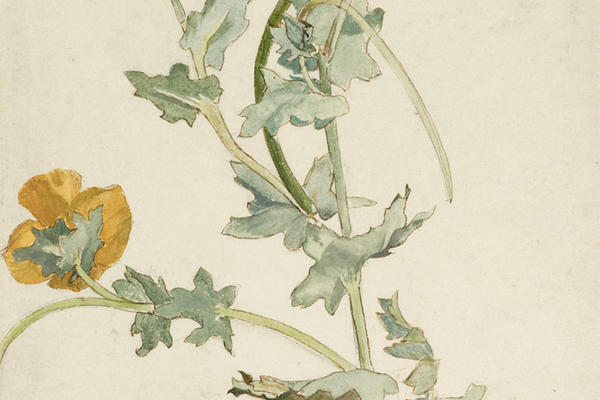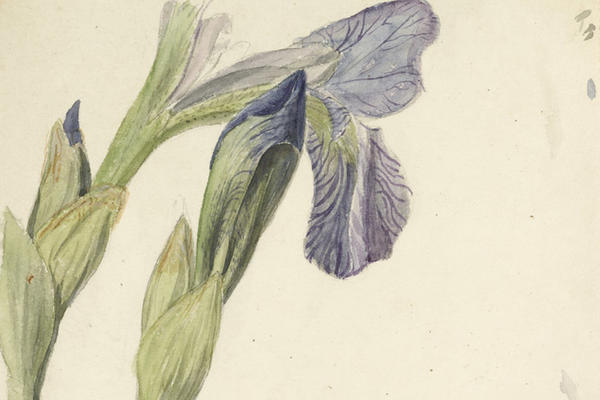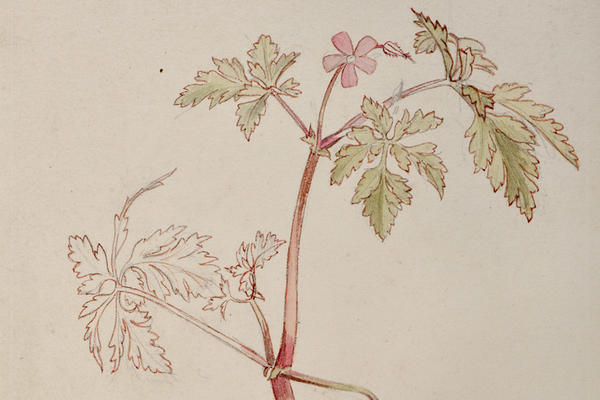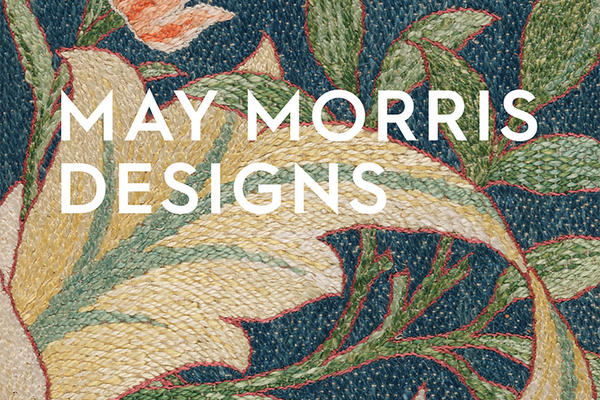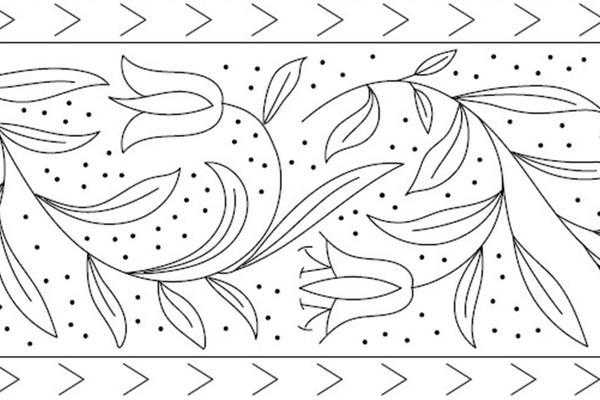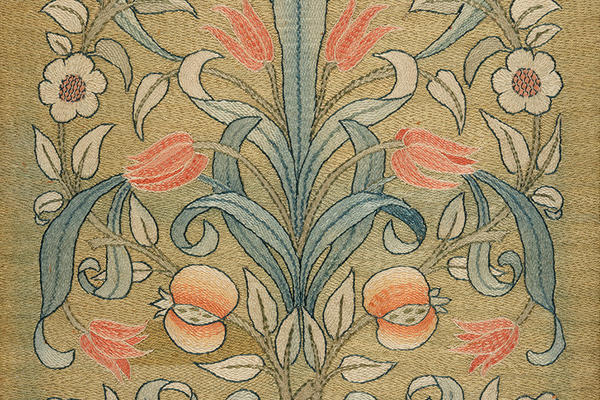THE MANY TALENTS OF MAY MORRIS
To mark the publication of the Ashmolean’s new book May Morris Designs, author and textile historian Lynn Hulse explores the life and work of this remarkable craftswoman alongside her many needlework designs in the Museum’s collection of works on paper.
5 minute read
May Morris (1862–1938) is recognised today as one of the leading designer-makers of the Arts and Crafts movement. She was both an exponent of decorative needlework or ‘art embroidery’ and an expert on the history of her craft.
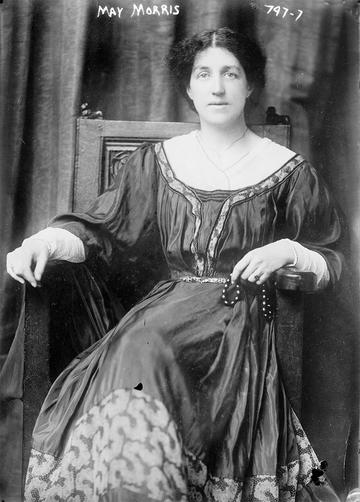
May Morris archive photo taken c. 1909 for her American lecture tour © Library of Congress, Rare Book & Special Collections Division
Living above the family shop and business
May was the younger daughter of the designer, author and visionary socialist William Morris and his wife, the embroiderer and artist’s model Jane Morris.
Her early years were spent living over the shop at 26 Queen Square, London, site of her father’s furnishings and decorative arts firm. It was there that she began to develop a talent for design, a keen eye for colour and a mastery of stitch.
A woman of many talents
The Arts and Crafts movement provided new opportunities for women to carve out a professional career in design and making.
In 1885, at the age of just 23, May was appointed manageress of the embroidery department at Morris & Co. She ran the studio for 12 years, designing kits and special commissions for the firm’s British and overseas clients while supervising her small team of workers.
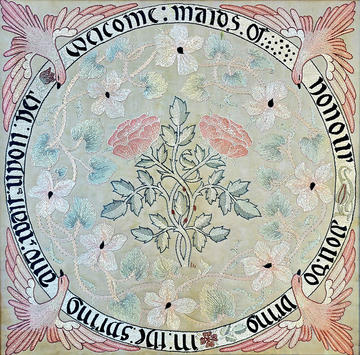
Maids of Honour fire screen panel or cushion cover, May Morris, c.1890, polychrome silks on silk © Paul Reeves collection
At her father’s death in 1896, May stepped down from the role to pursue her own career as designer, maker, embroidery tutor, writer and lecturer. She was also a campaigner for women artists, co-founding the Women’s Guild of Arts in 1907 to provide a forum for her ‘sisters’ who were denied membership of exclusively male organisations like the Art Workers’ Guild.
May continued to design for embroidery in her later years, fired by her passion for gardening and love of the English countryside around Kelmscott Manor, her Oxfordshire home.
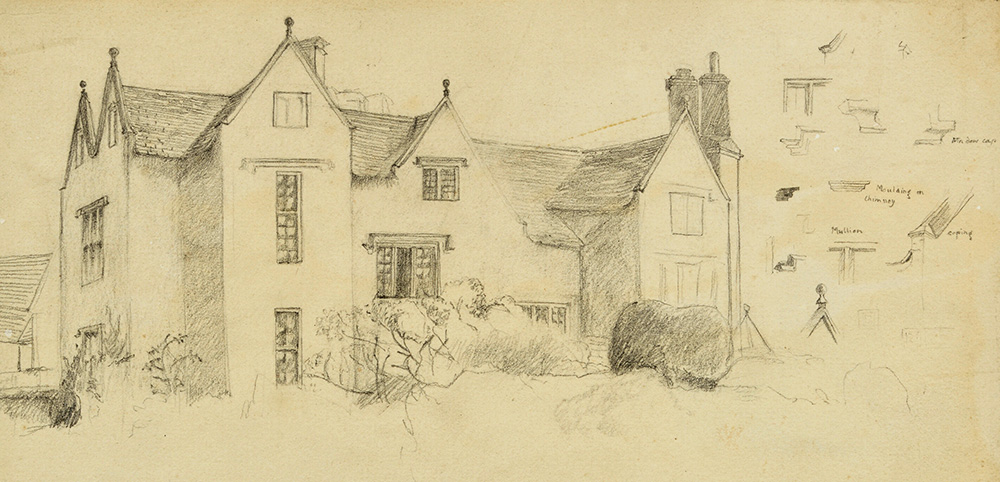
Kelmscott Manor with small architectural sketches (detail), May Morris, 1873, graphite with pale beige wash on off-white paper © Ashmolean Museum
‘The very soul and essence of beautiful embroidery’
May was at the forefront of the generation of decorative artists who sought to elevate embroidery from a domestic craft to a serious art form. In her technical guidebook Decorative Needlework, published in 1893, she described design as ‘the very soul and essence of beautiful embroidery’ and ranked it chief among the four elements that make a piece of needlework truly ‘artistic’.
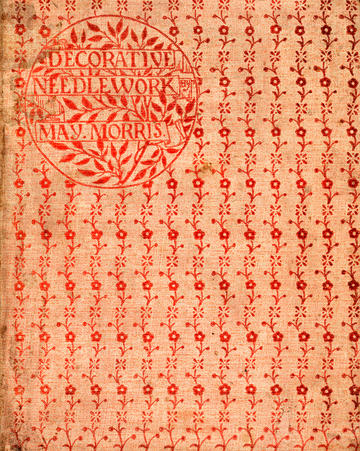
Decorative Needlework (London, 1893), May Morris, front cover, printed in red on pink buckram © Private collection
The Ashmolean Museum holds one of the largest collections of May’s designs, more than 300, ranging from roughly sketched ideas to finished outline patterns, dating from her years spent managing the embroidery department at Morris & Co. through to the First World War and beyond.
Most of the designs are for domestic furnishings and include wall hangings, portières, screen panels, cushions, photograph frames, table covers and tea cosies. There are also designs for book covers, pin cushions, monograms, dress panels, workbags and sachets, as well as ecclesiastical embroidery.
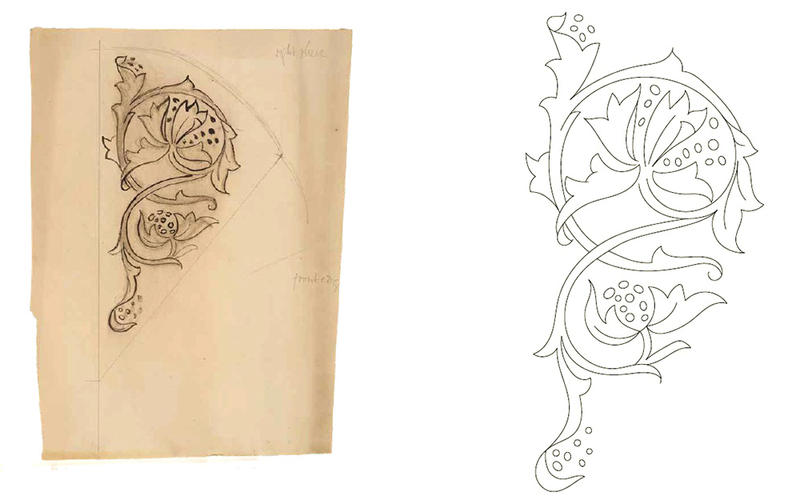
Peony and acanthus design for the right sleeve of a garment (design & pattern outline), May Morris c.1890–1900 © Ashmolean Museum
Designing from nature
May drew detailed studies of perennial shrubs, meadow plants and cottage garden flowers throughout her life.
Like many art embroiderers, she turned to what one commentator described as ‘old-fashioned flowers’, rendered with the fewest lines if in outline or the fewest shades if in colour, such as tulip, dianthus, harebell, marigold, jessamine, poppy or fritillary.
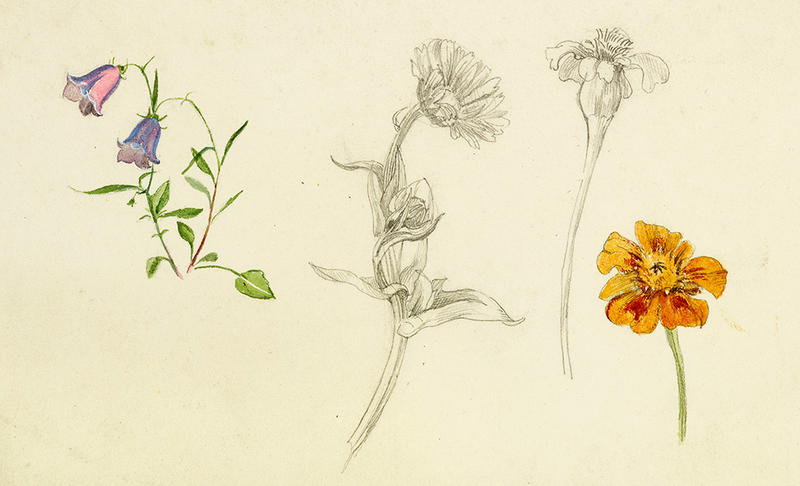
Studies of harebell and marigold flowers, 1880–1905, watercolour over graphite on cream paper © Ashmolean Museum
May’s design for a scrapbook cover exemplifies her skill in translating the necessary forms and details of these flowers into embroidery design, thereby producing patterns that ‘merely recall nature, not absolutely copy it’.
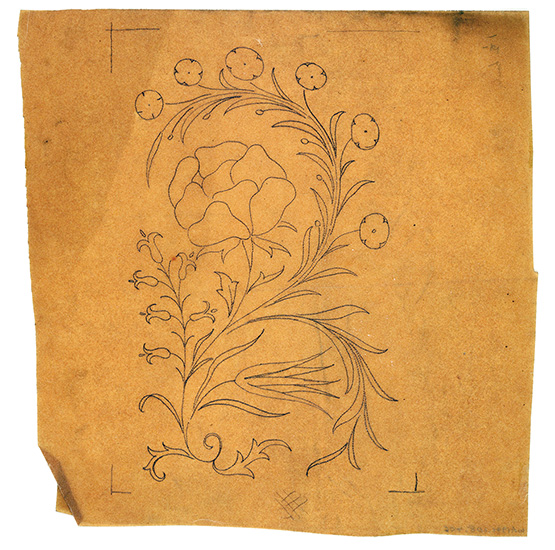
Design for a scrapbook cover, May Morris, 1890s © Ashmolean Museum
SELECTED MAY MORRIS NATURE DRAWINGS IN OUR COLLECTION
Study of an oriental poppy
Three studies of rosebuds
Study of a flag iris
Honeysuckle
Study of a group of peony poppies
Studies of peach, nectarine, plum and apricot blossom
Study of a sprig of elderberry
Three studies of a pomegranate
Two studies of woody nightshade
Study of a yellow-horned poppy
Tree studies of iris and a leaf stem
Wild geranium (Herb Robert)
Historical and non-Western ornament
May drew inspiration from illuminated manuscripts; from herbals like Leonhart Fuchs’s 'De historia stirpium' (1542) and John Gerard’s 'The herball, or generall historie of plantes' (1633), copies of which were gifted to her by her father; and specimens of historic needlework in museums and private collections. She firmly believed that studying the work of the 13th and 14th centuries offered the greatest reward to the aspiring designer or practitioner, saying:
'In always recommending ancient rather than modern work for study, I do so with intent; for… the work is not lacking in the essential qualities of good design, and is thorough in its way, and executed with due knowledge of material and due skill of hand.'
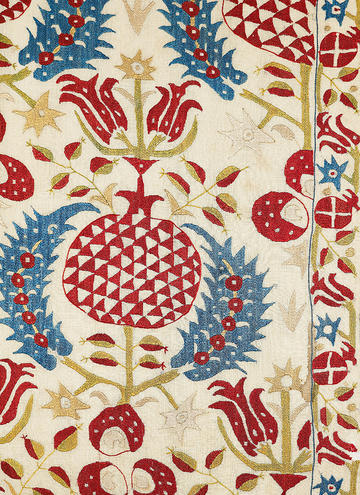
Wall hanging (detail) with tulips, pomegranates & serrated leaves, Ottoman Turkey, 17th century, polychrome silks on canvas © Ashmolean Museum
May also shared her father’s passion for the textiles of Turkey and Iran. The blend of naturalism and formalism in the treatment of floral design is present in several of May’s works, including the choice of botanical subjects (tulip, carnation, rose, peony and pomegranate) and the use of curving lines, ogival patterns (arched-like shapes) and interwoven plants and leaves.
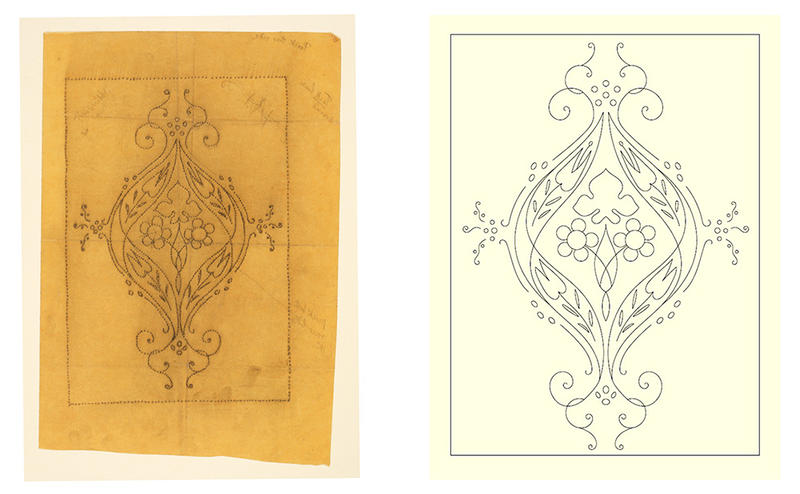
Design for a book cover, May Morris, c. 1885–1900 with the pattern outline on the right © Ashmolean Museum
From sketch to finished work
Several of May’s designs in the Ashmolean collection were stitched in the Morris & Co. house style (darning with a stem stitch outline), using natural dyed silks on Manchester cloth (a soft loosely woven cotton material), or twill silk, manufactured on handlooms in the firm’s Merton Abbey works, with the background left plain.
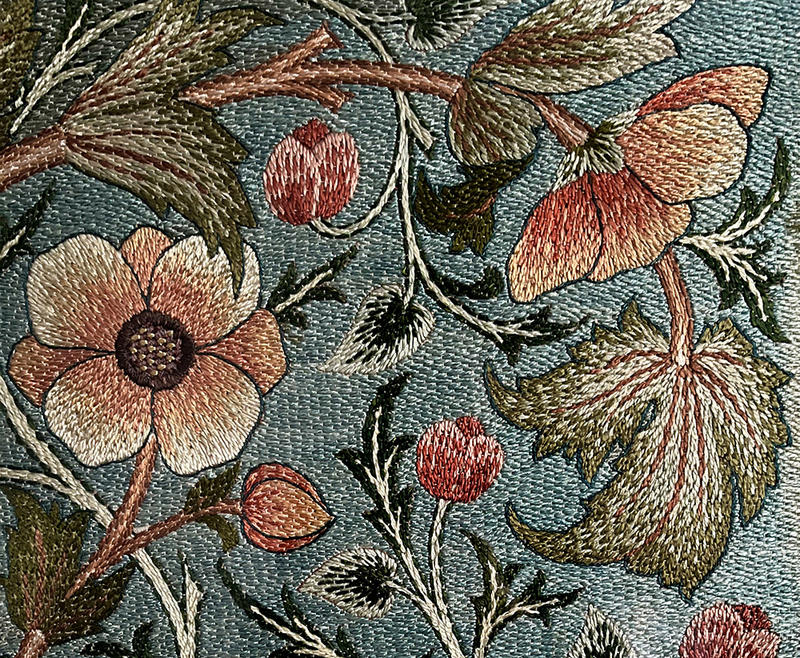
Anemone screen panel, designed by John Henry Dearle, c.1885–90, stitched by May Morris, polychrome silks on Manchester cloth © Private collection
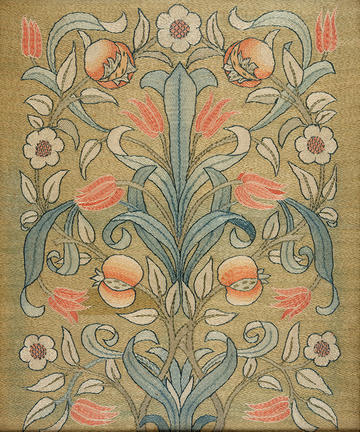
Tulip and pomegranate fire screen or cushion cover, May Morris, 1890s, polychrome silks on Manchester cloth © Private collection
Special commissions and works for family and friends were executed in natural dyed silks and wools and Japanese gold thread on a variety of materials, from handwoven linens and silk damask to woollen cloth.
For the most part, art embroiderers like May used the simplest and most common stitches, believing that ‘Excellence of workmanship does not lie in many curious and difficult varieties of stitch but in the expressive use of a few ordinary ones.’
The principal stitches found in art embroidery are long and short, satin, stem, split, darning, couching, laid work and French knot. May used all these stitches for her designs as well as chain, fly, herringbone, buttonhole, running, back, seeding and speckling stitch.
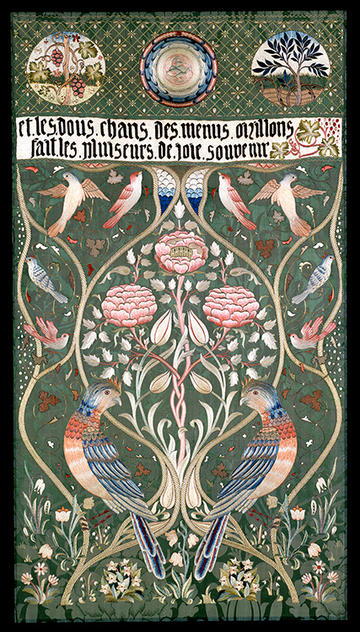
Autumn and winter panel, May Morris, c.1894, polychrome silks on Morris & Co. Oak silk damask © Private collection. Photo courtesy V&A, London
May Morris's legacy
May Morris is the consummate example of the Arts and Crafts ideal of the designer-maker, and her extant work is testament to her creative skills.
Today, her embroideries are much sought after in the saleroom, and her life and work are the subject of extensive study.
The union of art historical knowledge and craft practice that distinguishes May as a pioneer of decorative needlework in the late 19th and early 20th centuries is an inspiration for modern designers and embroiderers.
This article is based on Lynn Hulse's new book which is out now and you can buy from our online shop.
May Morris's patterns from the book are also available to download.
Come and join us on 12 September for a talk by Lynn Hulse on her new book where she'll be sharing some of May's designs.
From 9 September, when our Western Art Print Room reopens after a summer break, you can view our May Morris prints and drawings by appointment.
More details below



